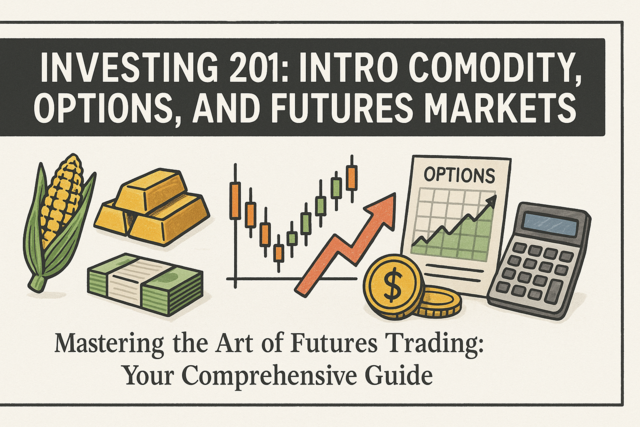For example, associated interest rate fees ease, as well as difficulty to obtain, and penalty structures are but a few of the aspects of mortgages that are fueled, either in full or in part, by the economy's ever changing status.
Some believe that the government controls the economy. And, although the answer to this is yes and no, there remain additional considerations beyond the government's exertion of power over the nation's monetary flow.
Generally speaking, interest rates are influenced by supply and demand. When the economy is vibrant and borrowing is burgeoning, interest rates rise. When the economy becomes stagnant and borrowing activities are on the decline, interest rates go down.
Interest rates thus are influenced by how the Federal Reserve, also known as The Fed, responds to market conditions and the impact upon lenders and borrowers.
A. Federal Reserve
To gain a fuller sense of how interest rates are determined we will begin by explaining the role of the Federal Reserve. Responsible for monitoring the government's money, the Federal Reserve is the governmental agency capable of exerting direct influence over the nation's monetary system, including the setting of interest rates and the shifting of monetary indicators.
The Federal Reserve uses two methods to maintain modest economic growth with low inflation. First, they implement a monetary policy that assures a steady but modest growth of money. Second, they establish the borrowing rate on two key financial instruments: the Federal Funds Rate, (the borrowing rate on loans between commercial banks and the Federal Reserve Discount Rate), and the rate of interest on funds borrowed by commercial banks from the Federal Reserve. Both key rates help to control the growth of money.
The central bank has a committee called the Federal Open Market Committee (FOMC) that meets periodically during the year (typically every five to eight weeks) to set the two key interest rates and establish its monetary policy. The FOMC is comprised of the seven members of the Board of Governors and five Reserve Bank Presidents. The committee reviews the preceding months' economic data for clues about the future and present health of the economy.
The committee will act preemptively after reviewing the economic data. If they believe that the economy is growing above their target range and creating inflationary pressures, the committee may elect to raise interest rates to slow economic growth. Conversely, if they believe that the economy is heading into a recession, they may lower rates to stimulate economic growth.
Because banks borrow money from the Federal Reserve, should their discount rates be higher, this then causes the bank's mortgage rates to be higher also.
The discount rate is an outgrowth of regularly held meetings of the FOMC, the body responsible for decreasing or increasing the discount rate. Any movement pertaining to the discount rate has the potential to leave a measurable impact upon short term mortgage loans (for instance, home equity and adjustable rate loans) and, as such, is viewed to be a weighty decision.
In accord with changing market conditions, the FOMC adjusts the discount rate to complement open market operations and to support the general flow of the current monetary policy.
Rather than happening automatically, such changes occur in reaction to market fluctuations and, thus, often lag behind market rates.
With respect to changes in the discount rate, the impact upon market interest rates depends upon whether or not the change was anticipated. In cases, where, yes, the change in the discount rate was predicted, the impact upon interest rates is likely to be minimal.
C. Mortgage Rates
Mortgage interest rates, like all retail interest rates, depend on the general interest rate in the broader economy, the rate at which banks and other financial institutions can borrow funds. Representing the long term end of the interest rate spectrum, lenders need to weigh-in future inflation and interest rate expectancies into their long term pricing decisions.
Because the mortgage rate tends to follow the 90 day bank bill rate where in reserve, lenders only have 10% of the funds they lent out as mortgages (the remaining funds have been borrowed). They cannot afford to have an abundance of defaults on mortgages, otherwise they will find themselves in a black hole.
D. Yield Curves
Yield curves are used to plot out the movement of interest rates over an extended period of time. As the mortgage matures, the yield curve is drawn to show the correlative path that interest rates will follow.
In some instances, the yield curve is flat while under other circumstances it is steep. For the most part, the yield curve tends to slope upward. Yet, during periods of compromised monetary policy, short term rates have in fact been known to rise above long term rates. The impact of such a condition upon the yield curve is that of a downward (or inverted, negative) slope.
When dealing specifically with home mortgages, a yield spread refers to the difference between the interest rate marketed to the borrower versus the (lower) interest rate the borrower (based upon their credit) was permitted to pay.
For example, should a borrower's credit warrant their taking out a loan at 6.5%, yet they opt to take the loan out at 7%; then the 0.5% difference in the interest rate is considered to be the yield spread.
In instances where such a positive yield spread exists, it serves as an additional way for the lender to make money without having to take on additional risk as the borrower's credit remains unchanged.)
When we speak of monetary policy and its impact upon the economy, we tend to come back to the Federal Reserve as this is the area over which they exert the greatest control.
It is at the discretion of the Federal Reserve to regulate banks by requiring that they hold specific levels of assets (reserves) in non-interest earning forms (vault cash and deposits).
The amount of reserves banks are required to hold is calculated as a percentage of the deposits they hold.
Called the required reserve ratio, in equation form, required reserves are computed as:
Required Reserves = (Required Reserve Ratio) x (Deposits)
And, should banks elect to hold reserves above and beyond what is required (excess reserves) these are calculated by:
Excess Reserves = Legal Reserves - Required Reserves.
E. Summation
The Federal Reserve, also known as "The Fed" is responsible for the variances in interest rates, as the agency uses these as a tool when attempting to regulate market conditions.
In a nutshell, the three tools available to the Fed when seeking to make monetary adjustments include:
- The Discount Rate. This is the interest rate charged by the Federal Reserve when banks borrow funds overnight from the Fed. Adjustments in the discount rate tend to lag behind changes in the funds rate.
- The Federal Funds Rate. This is the interest rate charged by banks when banks borrow funds overnight from one another other.
- Open Market Conditions. This is the Fed's system for fine tuning the funds rate through their selling of U.S. Treasury securities to banks. In response to these sales, the amount of reserves that the banks have housed with the Federal Reserve decline.
Based upon their ration of demand deposits (checking accounts), activities conducted by the Fed are intended to ensure that a certain level of reserves is maintained. Thus, banks may end up borrowing more from each other as a means of covering their short position with the Fed.
In turn, the increased pressure placed upon on intra-bank lending drives the funds rate up and, thus, creates increased amounts of financial pressure among both individuals and corporations.

























